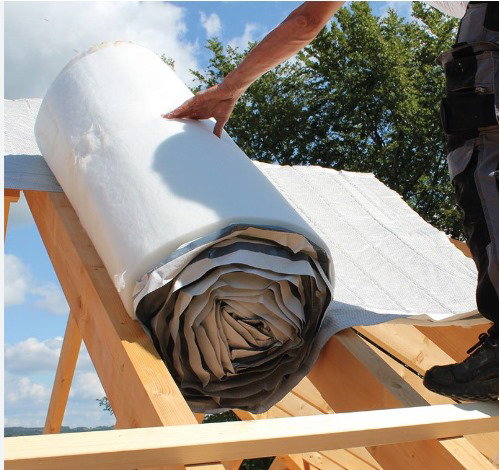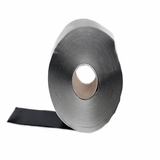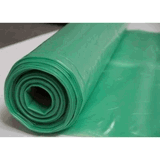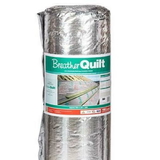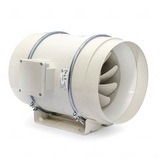- Blogs
- Role of Building Materials in Thermal Comfort
Role of Building Materials in Thermal Comfort

When considering the significance of thermal comfort in buildings, it's imperative to acknowledge the pivotal role that building materials play in achieving ideal indoor environments. From insulation to ventilation, materials have the power to sway the balance between sweltering heat and bone-chilling cold. By understanding how various materials can act as allies in maintaining a cozy atmosphere, you'll discover a domain where comfort meets innovation, prompting a shift towards a more sustainable and harmonious living space.
Key Takeaways
- Building materials impact heat exchange rates.
- They enhance thermal mass for comfort.
- Reflective surfaces manage internal temperature.
- Insulation minimises heat transfer for comfort.
- Materials play a pivotal role in sustainable living environments.
Importance of Building Materials
Building materials significantly impact the thermal comfort of a building by influencing heat exchange rates. When considering energy efficiency and material selection, the types of materials used in construction play a pivotal role in creating a sustainable and comfortable living environment. Sustainable building solutions are now at the forefront, emphasizing the importance of selecting materials that not only reduce energy consumption but also improve thermal mass to enhance comfort levels.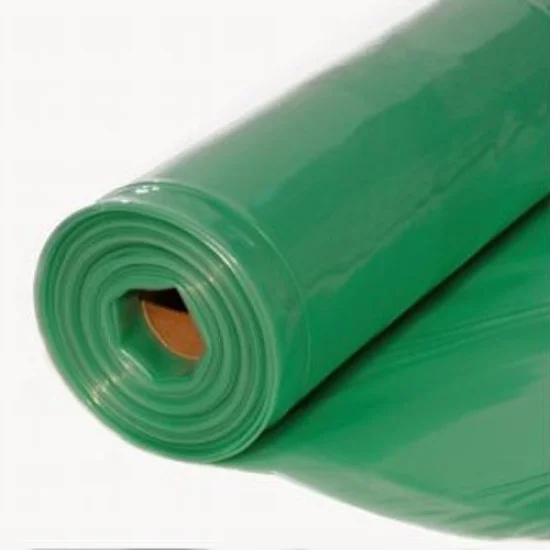
Moisture control is another vital aspect to consider when choosing materials, as improper moisture regulation can lead to discomfort. Reflective surfaces are key in heat regulation, helping to manage the internal temperature of a building effectively. By carefully considering these factors and selecting appropriate building materials, you can create a space that promotes thermal comfort, energy efficiency, and overall well-being for the occupants.
Make informed choices when it comes to materials to ensure a cozy and sustainable living environment.
Factors Influencing Thermal Comfort
Considering various elements like air temperature, humidity, air movement, and clothing choices is essential in understanding the factors that influence thermal comfort. These factors play a significant role in creating a comfortable environment within buildings, affecting how individuals perceive and experience temperature conditions.
To improve thermal comfort, it's vital to pay attention to:
- Temperature regulation: Proper management of indoor temperatures through heating and cooling systems.
- Humidity control: Maintaining ideal levels of moisture in the air to prevent discomfort.
- Air circulation: Ensuring adequate air movement to distribute heat evenly throughout the space.
- Clothing choices: Selecting suitable attire to adjust to varying temperature conditions effectively.
Role of Insulation in Temperature Regulation
When it comes to temperature regulation in buildings, insulation plays an essential role.
Insulation helps in maintaining a comfortable indoor environment by minimizing heat transfer through walls and roofs.
It also contributes to energy efficiency and can impact factors like fire retardancy, acoustic insulation, and indoor air quality.
Thermal Insulation ![Building materials]()
Proper insulation is crucial in maintaining a comfortable indoor environment by regulating temperature fluctuations effectively. When considering thermal insulation, keep in mind the following key points:
- Insulation effectiveness: Choose insulation materials that offer high thermal resistance to minimize heat flow.
- Energy efficiency: Insulation reduces the need for excess heating or cooling, leading to lower energy consumption.
- Installation techniques: Guarantee proper installation to avoid gaps or voids that can compromise insulation efficiency.
- Climate considerations: Select insulation types that are suitable for your specific climate to achieve the best thermal comfort year-round.
Fire Retardancy
Enhancing thermal comfort and ensuring building safety, insulation with fire-retardant materials plays a pivotal role in regulating temperatures by reducing heat transfer between hot and cool surfaces.
Fire safety and thermal performance are interconnected, with building codes emphasizing fire protection through material selection based on fire resistance. Glass, gypsum board, concrete, and refractory bricks are essential components for heat transfer reduction and building safety. Glass's low heat conduction, gypsum board's non-combustible nature, and bricks' natural fire resistance contribute to effective insulation.
Following construction guidelines for fire prevention, proper insulation with fire-retardant materials is vital for maintaining thermal comfort and ensuring a safe indoor environment. Adhering to these practices not only improves energy efficiency but also safeguards occupants against potential fire hazards.
Acoustic Insulation
Acoustic insulation contributes significantly to regulating temperature by reducing noise transfer through walls and floors. When considering soundproofing solutions and noise reduction techniques, insulation effectiveness plays an important role in maintaining a comfortable indoor environment.
Effective acoustic design strategies involve utilizing materials like fiberglass, mineral wool, and cellulose to minimize sound transmission, ensuring a quieter space. Additionally, building acoustics trends emphasize the importance of combining acoustic and thermal insulation for improved overall performance.
Insulation and indoor air quality
When considering the relationship between insulation and indoor air quality, it is important to recognize the vital role insulation plays in maintaining ideal temperature regulation within a building. Proper insulation not only helps reduce heat transfer but also contributes to energy savings and overall comfort. Here are some key aspects related to insulation and indoor air quality:
| Aspect | Importance |
| Ventilation efficiency | Maintains fresh air circulation and sustains air quality. |
| Moisture control | Prevents mold and mildew growth, securing a healthy environment. |
| Health benefits | Improves indoor air quality, reducing respiratory issues. |
| Energy savings | Enhances energy efficiency by reducing heating and cooling costs. |
| Sustainable design | Promotes environmentally friendly practices for a greener future. |
Impact of Smart Building Materials
Smart building materials, such as Phase-Change Materials (PCMs) and thermochromic materials, revolutionize indoor temperature control by actively responding to environmental changes. These materials not only improve energy efficiency but also provide visual feedback, sustainability benefits, occupant comfort, and precise temperature regulation. Here's how they achieve this:
- Energy Efficiency: PCMs store and release heat intelligently, reducing the need for excessive heating or cooling.
- Visual Feedback: Thermochromic materials change color in response to temperature shifts, helping occupants visually gauge indoor climate changes.
- Sustainability Benefits: By decreasing reliance on mechanical systems, smart materials contribute to energy savings and environmental responsibility.
- Occupant Comfort: The ability of these materials to regulate temperatures ensures a consistently comfortable indoor environment, promoting well-being and satisfaction.
With these innovative building materials, spaces become more efficient, comfortable, and sustainable, offering occupants a sense of belonging to a forward-thinking environment.
Enhancing Indoor Comfort With Materials
Improving indoor comfort with carefully selected building materials is vital for creating a conducive and pleasant living or working environment. Material selection plays a pivotal role in ensuring comfort improvement and temperature regulation within a space.
By choosing intelligent building materials like phase-change materials (PCMs) and smart glass, you can effectively regulate indoor temperatures, leading to a more comfortable atmosphere. Incorporating thermochromic materials and electrochromic windows further boosts thermal comfort by responding dynamically to temperature changes. These innovative materials not only elevate comfort levels but also contribute to energy efficiency and sustainable design practices.
Smart building envelope materials actively adapt to environmental variations, maintaining an ideal indoor climate without relying heavily on mechanical heating and cooling systems. While traditional materials have limitations in insulation, the use of smart building materials aims to create a more comfortable indoor environment while reducing energy consumption and promoting sustainability efforts.
Make informed choices when selecting materials to transform your indoor spaces into cozy and energy-efficient sanctuaries.
Frequently Asked Questions
What Are the Best Building Materials for Thermal Comfort?
When aiming for thermal comfort, consider insulation materials for warmth, natural materials for eco-friendliness, thermal mass like concrete for stability, reflective surfaces for cooling, and ventilation strategies for fresh air. Your choices directly impact your comfort.
What Is the Importance of Thermal Properties of Building Materials?
When considering the importance of thermal properties in building materials, focus on insulation and energy efficiency. Your material selection and design impact climate sustainability and comfort. Understanding thermal conductivity improves performance and temperature regulation for a cozy environment.
What Is the Primary Function of a Building in Relation to Thermal Comfort?
In achieving ideal thermal comfort, your building design focuses on maintaining stable indoor temperatures and minimizing energy consumption. By selecting suitable insulation materials and embracing sustainable architecture, you create a cozy environment for occupants.
What Are the Factors Influencing Building Thermal Comfort?
In achieving thermal comfort, factors like climate control, insulation choice, architectural design, HVAC systems, and energy efficiency play key roles. Understanding these elements helps you create spaces that promote comfort and a sense of belonging.
Conclusion
To sum up, building materials play a crucial role in ensuring thermal comfort by influencing heat exchange rates, regulating internal temperatures, and improving energy efficiency.
By selecting appropriate materials with high thermal resistance and acoustic insulation properties, buildings can maintain a comfortable indoor environment while reducing heating and cooling needs.
Smart building materials further amplify these benefits, contributing to sustainable living practices and enhancing occupants' well-being.
Making informed choices in building materials is key to creating a comfortable and efficient living space.

Samuel Hitch
Managing Director
Buy Insulation Online.
Leave A Reply
Your feedback is greatly appreciated, please comment on our content below. Your email address will not be published. Required fields are marked *
